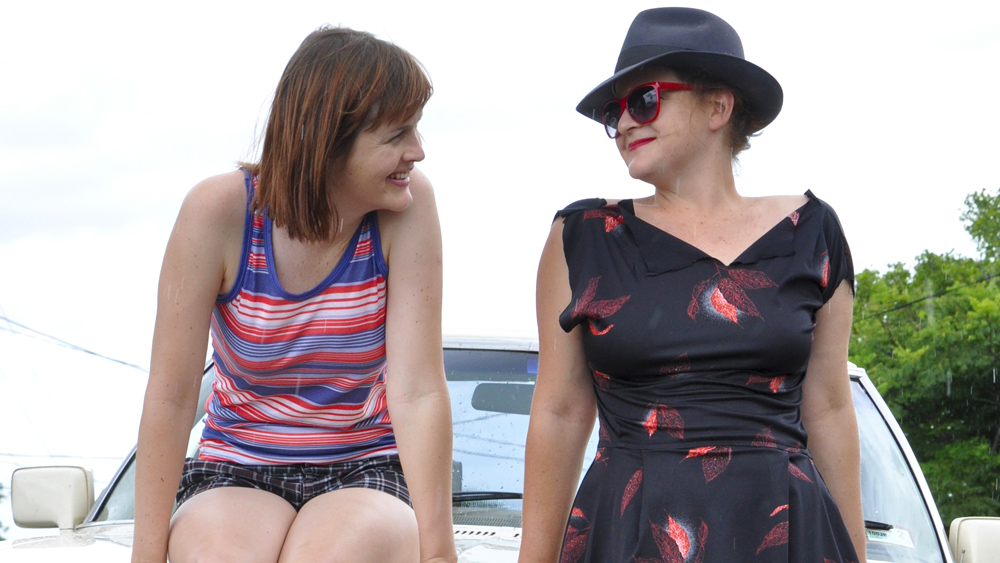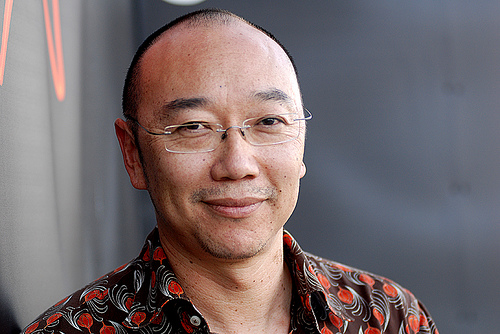21st CENTURY MAN: THE BOB WRIGHT INTERVIEW
 Thursday, January 17, 2013 at 4:04PM
Thursday, January 17, 2013 at 4:04PM Thirty years ago, Bob Wright was my boss, and he frightened me a bit. He was, in modern management parlance, the COO of the Australasian division of CBS Fox Home Video (later, 20th Century Fox Home Entertainment). He carried with him an air of gravitas that has not diminished. But he is a deeply humble man (he refuses to supply a photo of himself for this article), one of those old-school hard-workers who deflect any mention of achievements while discussing a career in the Australian home video industry that has spanned over three decades. He agreed to meet at a cafe in Sydney’s northwest for what would be his only Australian media interview. SCREEN-SPACE caught him at his most candid; only a few days earlier, the independent home video distribution outfit he co-founded in 1990, 21st Century Pictures, closed its doors after more than two decades.
 (Above: CBS Fox employees at an industry function, circa 1990. Wright, in glasses, is positioned back-row, far right)
(Above: CBS Fox employees at an industry function, circa 1990. Wright, in glasses, is positioned back-row, far right)
“When I told all the buying groups that I was leaving, all but one said that I had jumped too early,” recalls the stoic industry veteran. “Personally, I think I did it at time where I know (the titles) I’ve got were going to struggle as new releases. I have no outstanding advances from films, so I’ve basically been able to walk away with a very clean sheet.”
 21st Century Pictures began when Wright and fellow CBS Fox exec Ray Robinson (pictured, right: in 1985) saw the market was ripe for a new Australian-owned outfit. ““The main aim was to be a strong independent distributor. Robbo was a tremendous salesman; he was the frontman and I was the backman. He spoke with Andrew Pike of Ronin Films and, within a year, Frank Cox from NewVision and got them on board,” recalls Wright of the company’s inception. “Only a few months after we started we had Ronin product and, of course, they had Shine (pictured, below) which was a huge success for us. When NewVision, which became Hopscotch, came on board, well...we had their last film in April (2012), Don’t Be Afraid of the Dark. That’s a 16, maybe 17 year relationship.”
21st Century Pictures began when Wright and fellow CBS Fox exec Ray Robinson (pictured, right: in 1985) saw the market was ripe for a new Australian-owned outfit. ““The main aim was to be a strong independent distributor. Robbo was a tremendous salesman; he was the frontman and I was the backman. He spoke with Andrew Pike of Ronin Films and, within a year, Frank Cox from NewVision and got them on board,” recalls Wright of the company’s inception. “Only a few months after we started we had Ronin product and, of course, they had Shine (pictured, below) which was a huge success for us. When NewVision, which became Hopscotch, came on board, well...we had their last film in April (2012), Don’t Be Afraid of the Dark. That’s a 16, maybe 17 year relationship.”
 The heady days of overseeing the release of big studio product for the Fox corporation (he balanced the sheets on the Australian sector release of such home video hits as Die Hard, Working Girl and The Abyss) still hold a special if distant memory for Wright. “When I first started at Fox, we were getting $100 a unit per title and a new account had to pay cash up-front. The first order had to be at least 5000 bucks and cash up-front for six months!” he says, with an ironic laugh. “Bring those days back and I think I might have stayed on!” There were drawbacks that Wright doesn’t miss, though. “The problem with that was overseas bosses and the midnight phone calls; ‘why haven’t you reached your numbers?’, pressure like that. It has always been great working for myself.”
The heady days of overseeing the release of big studio product for the Fox corporation (he balanced the sheets on the Australian sector release of such home video hits as Die Hard, Working Girl and The Abyss) still hold a special if distant memory for Wright. “When I first started at Fox, we were getting $100 a unit per title and a new account had to pay cash up-front. The first order had to be at least 5000 bucks and cash up-front for six months!” he says, with an ironic laugh. “Bring those days back and I think I might have stayed on!” There were drawbacks that Wright doesn’t miss, though. “The problem with that was overseas bosses and the midnight phone calls; ‘why haven’t you reached your numbers?’, pressure like that. It has always been great working for myself.”
In addition to the strong ties he and his team established with the local sector, Wright became a well-liked and savvy negotiator in the international marketplace. “We used to go to AFM, Cannes and MIFED,” he says of the high profile he enjoyed at the content industry’s coalface. “Cannes mainly because of our involvement with Hopscotch, but it’s a very expensive market to attend, with everyone caught up in the hype of the film festival. Sometimes we’ve gone there and not bought a film. Often the best time to be at those markets are when people are packing up their offices and have movies they want to offload, meaning we could negotiate a reasonable price.”
 Driving units into the ultra-competitive rental market never became easy for 21st Century Pictures, whose monthly releases would range from high-brow cinema titles (Kiss or Kill; Mysterious Skin; Leaving Las Vegas [pictured, right]; Source Code) to what the industry kindly calls ‘filler’ (Pterodactyl; Bong of the Dead; Sand Sharks). Wright is pragmatic about the perception of and reception afforded his company. “We never got the recognition of the major film studios, never developed the reputation of Roadshow Home Video, which was obviously the major independent distributor,” he says. “But, month to month, it came down to the product. If you did the numbers and got the (per unit) price you wanted, we did very well, but we were never courted to the extent that the majors were.”
Driving units into the ultra-competitive rental market never became easy for 21st Century Pictures, whose monthly releases would range from high-brow cinema titles (Kiss or Kill; Mysterious Skin; Leaving Las Vegas [pictured, right]; Source Code) to what the industry kindly calls ‘filler’ (Pterodactyl; Bong of the Dead; Sand Sharks). Wright is pragmatic about the perception of and reception afforded his company. “We never got the recognition of the major film studios, never developed the reputation of Roadshow Home Video, which was obviously the major independent distributor,” he says. “But, month to month, it came down to the product. If you did the numbers and got the (per unit) price you wanted, we did very well, but we were never courted to the extent that the majors were.”
The consolidation of the retail sector into franchise-run buying groups shifted the power from the distributors, who traditionally wielded might based on the commercial strength of their titles. Able to now buy big unit numbers via head office/single price-point agreements, the chains (predominantly Video Ezy, Civic Video, Top Video and, eventually, Blockbuster) had the upper hand. The new paradigm hurt independent operators like 21st Century, who saw their per unit asking price plummet just to ensure multiple units of their titles found shelf space.
“Once the industry got to the point where the business was controlled by the (buying) groups, and you basically had to go to their office every month to get a deal, then, yeah, it was a struggle,” recalls Wright, who handled such negotiations along with stalwart sales managers like Dan Quinn and Martin Gallery after the departure of Robinson, who took an executive position with Roadshow Home Video. “But even then, when you had the product, had a theatrical title that had taken a million bucks at the box office, whether you were Columbia Tri-Star or CIC, you would get the support and get your share of the money. In some cases I reckon we did better with the retailers because we were independent. The ‘Aussie spirit’, and the support afforded smaller operators, did help us at certain times.”
It would be the ending of 21st Century Pictures’ contract with Hopscotch that made Wright realise his operation had reached a fork in the road . “When I knew that the Hopscotch stuff was going, I thought, ‘Well, I won’t buy anymore films but just release direct-to-dvd titles and see what happens.’ They didn’t do very well so I decided that, ok, it’s time to pull up stumps and call it quits.” The DVD retail operations have been absorbed by Melbourne-based Griffin Entertainment and Wright, exhibiting his keen business sense, signed a download deal with Bigpond that extends the life of his catalogue to nearly 7 years; the last film Wright owns under the 21st Century banner has a rights expiration date of 2021. “If I was 20 years younger, I probably would have thought, ‘Ok, what can we do as an alternative to keep us going?’” he says, contemplatively. “But at the age I am, I’m ready to retire. 21st Century Pictures was now 20 years old and I would’ve been in the rental market for nearly 30 years, so it was time to put (my) feet up and have a rest.”
When I ask him to cite the one aspect of 21st Century Pictures of which he is most proud, his trademark rapid-fire response fails him. He is reflective. “I’m most proud of the staff,” he finally says, softly. “The team has always been very good and very supportive. And I’ve no regrets. I’ve enjoyed what we’ve done.”






























